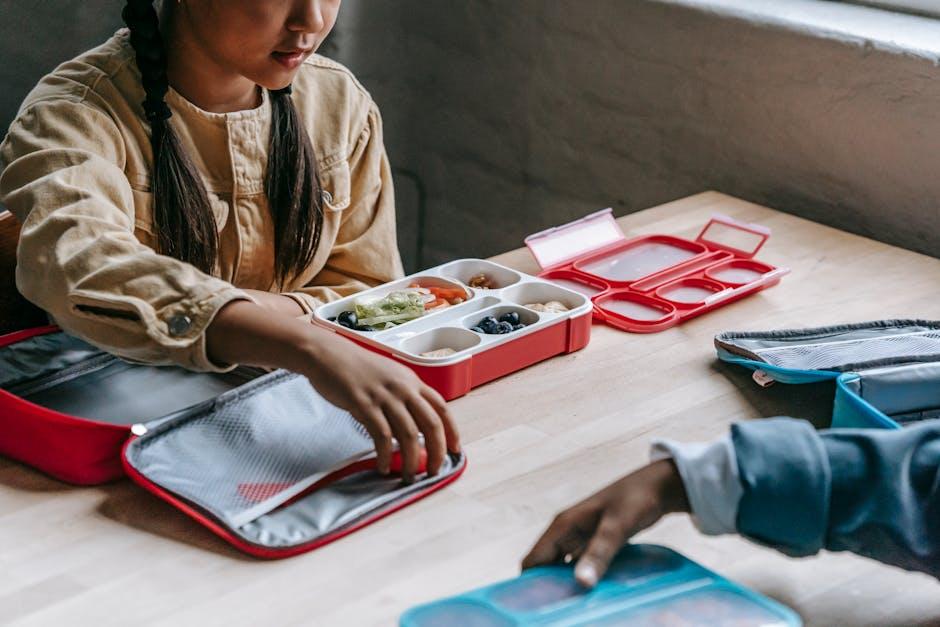In the whirlwind of childhood, where curiosity sparks at every turn and energy seems boundless, creating a balanced day can feel like both an art and a science. For parents and caregivers, the challenge lies not in filling the hours but in weaving together moments that nurture growth, joy, and well-being. A balanced day for kids isn’t about rigid schedules or endless activities; it’s about harmony-blending play with rest, learning with freedom, and movement with calm. This article explores practical ways to design a day that supports a child’s development while honoring their natural rhythms and interests, laying the foundation for healthy habits and happy hearts.
Understanding the Importance of Routine for Kids’ Wellbeing

Children thrive in environments where predictability meets flexibility, and a well-established routine balances structure with spontaneity. A consistent daily rhythm helps kids develop a sense of security and boosts their confidence, allowing them to navigate their day with ease. When children know what to expect, their anxiety diminishes, making room for creativity and learning. This rhythm doesn’t just schedule activities; it nurtures emotional stability, encourages healthy habits, and nurtures a mindset geared towards growth and exploration.
Implementing a routine is not about rigidity but about forming gentle habits that support their wellbeing. Key elements to consider are:
- Regular meal and snack times: Fuel their bodies and brains for optimal energy and focus.
- Consistent sleep schedules: Aligns with their natural circadian rhythms, fostering rest and recovery.
- Time for play and creativity: Essential for cognitive development and emotional expression.
- Quiet moments for relaxation: Allows processing of the day’s events and calming down before bedtime.
| Time | Activity | Benefit |
|---|---|---|
| 7:00 AM | Wake up & Breakfast | Energy boost, sets tone for day |
| 9:00 AM | Learning/play session | Development & imagination |
| 12:00 PM | Lunch & Rest | Refueling & calming |
| 3:00 PM | Outdoor activity | Physical health & social skills |
| 7:30 PM | Wind down & bedtime | Restorative sleep |
Incorporating Play and Learning for Holistic Development

Creating an environment where children can explore and absorb knowledge naturally is essential to their growth. By blending playful activities with learning objectives, kids develop cognitive, emotional, and social skills seamlessly. Encourage activities that engage curiosity, such as interactive storytelling, hands-on experiments, and imaginative play, which promote problem-solving and motor skills without feeling like a chore. Balance these with quiet time for reflection or creative pursuits like drawing or journaling to nurture their attention span and emotional intelligence.
Integrating diverse play-and-learn experiences into daily routines can be simplified through thoughtful scheduling. Consider maintaining flexibility while ensuring exposure to various stimuli throughout the day. Here’s a simple guide to help structure these moments effectively:
| Activity Type | Example | Developmental Benefit |
|---|---|---|
| Active Learning | Building blocks | Enhances spatial reasoning, creativity |
| Social Play | Role-playing games | Improves communication, empathy |
| Quiet Time | Reading or puzzles | Boosts concentration, patience |
- Rotate activities to keep engagement high and stimulate different brain areas.
- Observe and adapt based on your child’s interests and energy levels.
- Celebrate small victories to build confidence and encourage continued exploration.
Meal Planning and Nutrition Tips to Fuel Growing Bodies

Growing bodies thrive on a variety of nutrient-dense foods that provide energy, support development, and build strong immunity. To ensure kids receive optimal nourishment throughout the day, aim to include a colorful array of vegetables, whole grains, lean proteins, and healthy fats in every meal. Don’t underestimate the power of hydration; encouraging water and natural fruit juices can keep children energized and focused. Small, frequent meals paired with wholesome snacks can prevent energy dips and support steady growth.
Consider these simplified guidelines to streamline your kids’ daily nutrition:
- Breakfast: Whole grain cereals or oats with fresh fruit and a protein source like yogurt or eggs.
- Lunch: A balanced plate featuring lean protein, vibrant veggies, and complex carbs such as quinoa or brown rice.
- Snacks: Nut butter on whole wheat crackers, sliced fruit, or crunchy raw vegetables with hummus.
- Dinner: Grilled or baked protein with mixed steamed veggies and a small portion of healthy fats like avocado or olive oil.
| Meal | Key Nutrients | Sample Food Ideas |
|---|---|---|
| Breakfast | Fiber, Protein, Vitamins | Oatmeal, berries, scrambled eggs |
| Lunch | Protein, Iron, Carbs | Chicken wrap, carrot sticks, brown rice |
| Snack | Healthy Fats, Vitamins | Apple slices, peanut butter, cucumber |
| Dinner | Protein, Fiber, Healthy Fats | Grilled salmon, broccoli, quinoa |
Establishing Consistent Sleep Habits for Restorative Rest

Consistency is key when guiding children toward better sleep. Establishing a predictable bedtime routine calms the mind and eases body tension, signaling that it’s time to wind down. Begin by setting a fixed bedtime that allows adequate rest for their age, then build calming rituals around it, such as reading a favorite book or practicing gentle stretches. These habits not only anchor the day but also foster a secure environment where restful sleep can flourish naturally.
Creating an atmosphere conducive to sleep means addressing both the physical space and daily habits. Consider these tips:
- Dim the lights an hour before bed to encourage melatonin production.
- Limit screen time to reduce exposure to blue light, which can disrupt sleep rhythms.
- Ensure comfort with breathable bedding and a cool room temperature.
- Encourage quiet activities to ease the transition from daytime energy to nighttime calm.
| Age Group | Recommended Sleep Hours | Ideal Bedtime |
|---|---|---|
| Preschoolers (3-5) | 10-13 hours | 7:30 – 8:00 PM |
| School Age (6-12) | 9-12 hours | 8:00 – 8:30 PM |
In Retrospect
Creating a balanced day for kids is like composing a symphony-each part, whether play, learning, rest, or nourishment, plays a vital role in the harmony of their growth. By thoughtfully weaving together these elements, we offer children a rhythm that nurtures their minds, bodies, and spirits. Remember, balance isn’t about perfection but about flow-giving children the space to explore, relax, and thrive in their own unique tempo. With a little intention and flexibility, every day can become a masterpiece of well-rounded childhood.











